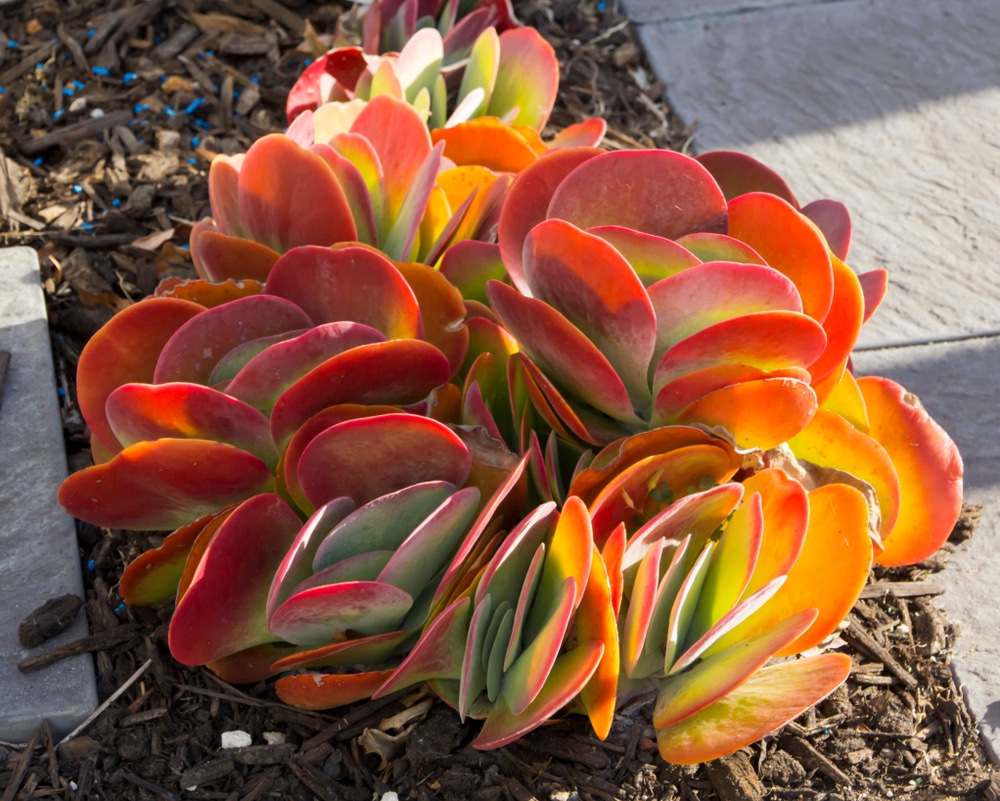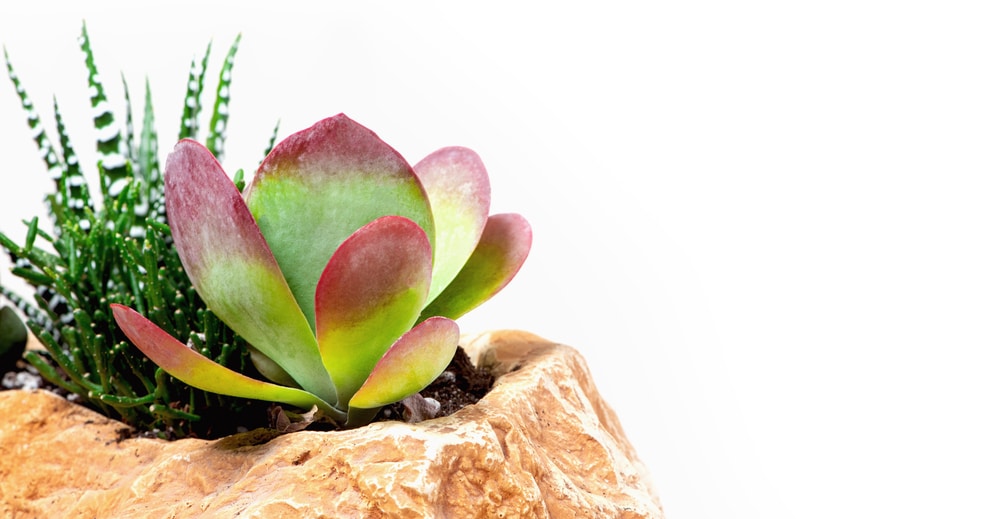If you’re looking for a unique and striking succulent to add to your collection, the paddle plant (Kalanchoe luciae) is a great option. This South African native is also the flapjack succulent, red pancakes, and dessert cabbage.
It’s easy to see why it’s called a paddle plant – its large, flat leaves are arranged in a rosette pattern that resembles a stack of pancakes.
| Botanical Name | Kalanchoe luciae |
| Common Name | Flapjack Succulent, Paddle Plant, Red Pancakes, Dessert Cabbage, Dog Tongue |
| Plant Type | Evergreen succulent |
| Flower Color | White to pale yellow |
| Size When Mature | up to 36 inches |
| Bloom Time | Late winter to early spring |
| Sun Requirements | Full sun/partial sun |
| USDA Hardiness Zones | 9a to 11b |
| Soil PH Range | 6.1 – 7.8 |
| Soil Type | Sandy, well-drained |
| Water Needs | Low |
| Native Area | South Africa, Mozambique, and Zimbabwe |
What you Need to Know About Paddle Plant
Kalanchoe luciae, also known as the paddle plant, is a succulent native to Madagascar. The plant gets its name from its paddle-shaped leaves, which can be tinged with red or, under the right conditions, turn almost entirely red. The plant typically grows to a height of 24 inches, but under ideal conditions, it can produce a flower stalk that reaches up to 36 inches.
The paddle plant receives the prestigious Garden Merit Award from the Royal Horticultural Society. The award is given to plants that are easy to grow and maintain and have demonstrated exceptional performance in gardens.
Although they may look similar at first glance, the Kalanchoe thyrsiflora and Kalanchoe luciae are two distinct varieties of paddle plants. Both belong to the genus Kalanchoe in the Crassulaceae family, but there are some subtle differences between them.
Most of the time, the two are interchanged and misnamed, so it can be tricky to figure out which one you have. If you’re unsure, the best way to tell them apart is by looking at the flowers. The flowers only appear when the plant reaches maturity in four years.
Thyrsiflora’s blooms are very fragrant and have a deep yellow color. Luciae’s blooms, on the other hand, are white or pale yellow and have very little scent. Aside from the flowers, Thyrsiflora also has a powdery-chalky coating on its leaves.
How to Care for Paddle Plant
Here’s everything you need to know about growing and caring for a thriving the Paddle plant.
Light
If you’re growing paddle plants indoors, give them plenty of light. It’s critical to provide bright light to kalanchoes that are grown indoors. If they do not get enough light, their growth will be straggly.
Full sunlight promotes the bet leaf development and leaves a reddish hue. You may grow your paddle plant in partial shade during the afternoon heat if your area experiences strong summer heat and sunlight.
Situating the kalanchoes directly in a hot window may cause entire leaves or leaf tips to burn, especially during the hot summer months. When growing kalanchoes indoors, it is important to provide them with bright light but protect them from direct sun.
You can also grow kalanchoes under artificial lights if you do not have a location that gets bright indirect light. Fluorescent lights are a good option for growing succulents and can be found at most hardware stores.
Water and Soil Needs
One of the best things about paddle plants is that they are very easy to care for. They are quite drought tolerant and only need to be watered every one to two weeks.
Soak the soil thoroughly, and then allow it to dry out completely before watering again. Be sure not to leave the plant in water, as this can lead to root rot. Minimal to no watering is needed during the winter months.
The paddle plant grows best in sandy, well-drained soil. If your soil is heavy or clay-like, you can mix in some sand or perlite to improve drainage. You can also grow paddle plants in pots filled with cactus mix.
Temperature Requirements
The paddle plant, also known as the desert cabbage, is a succulent native to Africa. It is a drought-tolerant plant that can survive in a wide range of temperatures, from 60°F to 85°F. However, the leaves of the paddle plant can suffer damage when temperatures drop below 30℉.
If grown outdoors, the paddle plant will thrive in USDA hardiness zones 9a to 11b.
Fertilizer
Although paddle plants are not big feeders, they still require some fertilizer to stay healthy. A good rule of thumb is to use 10-10-10 at half strength. You should cease feeding the plant during winter, as this is when it goes through dormancy and stops active growth. Once spring comes and the plant resumes growth, you can resume fertilizing.
Common Diseases
Despite its popularity, the paddle plant is susceptible to several common diseases. Root rot and powdery mildew are the most common problems affecting this plant.
Root rot is caused by a fungal infection that begins in the roots and spreads to the rest of the plant. Symptoms include yellowing leaves, wilting, and premature leaf drop. If left untreated, root rot can kill the paddle plant.
Powdery mildew is another disease affecting many plants, including the paddle plant. This disease manifests as a white or gray powder on the leaves and stems of the plant. Powdery mildew can cause leaves to be yellow and drop prematurely. In severe cases, it can kill the plant outright.
Paddle Plant Propagation
One of the best things about paddle plants is that they are very easy to propagate. The two most common methods of paddle plant propagation are offsets and leaf cuttings.
Once the flower dies, so does the main plant. However, before it dies, it will have produced offsets. Offsets are small plantlets that form around the base of the main plant. Once they have matured, you can carefully remove them from the main plant and pot them on their own.
To propagate a paddle plant from a leaf cutting, cut a healthy leaf from the plant with a sharp knife. Allow the cut end of the leaf to callous over for a few days, and then pot it up in well-draining soil. Water the leaf-cutting sparingly, as too much water can cause it to rot. Transplant the leaf cutting to its pot once it has produced roots.


